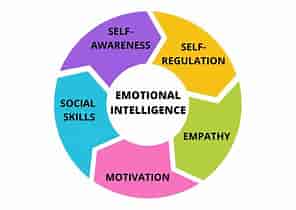As global environmental concerns continue to escalate, businesses are increasingly recognizing the importance of sustainable practices. ISO 14001, an internationally acclaimed standard for environmental management systems (EMS), provides organizations with a framework to protect the environment, respond to changing environmental conditions, and improve overall environmental performance. This article explores the significance of ISO 14001, its core principles, and how it helps organizations lead the way in environmental management.
1. Understanding ISO 14001: ISO 14001 is part of the ISO 14000 family of standards, which focuses on various aspects of environmental management. ISO 14001 sets out the criteria for an effective EMS, helping organizations improve their environmental performance through more efficient use of resources and reduction of waste. The standard is applicable to any organization, regardless of its size, type, or nature, and it is designed to integrate with other ISO management system standards, such as ISO 9001.
2. Core Principles of ISO 14001:
Environmental Policy: Organizations must establish an environmental policy that outlines their commitment to continuous improvement and compliance with environmental laws and regulations.
Planning: ISO 14001 requires organizations to identify environmental aspects and impacts, set objectives and targets, and develop action plans to achieve these goals. This includes risk assessment and opportunities for improvement.
Implementation and Operation: Organizations must implement the EMS, ensuring that resources are allocated, roles and responsibilities are defined, and employees are trained. Operational controls and emergency preparedness plans are essential components of this stage.
Performance Evaluation: Regular monitoring, measurement, and evaluation of environmental performance are crucial. This includes conducting internal audits and management reviews to ensure the EMS is effective and compliant.
Improvement: Continuous improvement is a key principle of ISO 14001. Organizations must take corrective actions to address non-conformities and implement improvements based on audit findings and performance evaluations.
3. Benefits of ISO 14001 Certification:
Enhanced Environmental Performance: ISO 14001 helps organizations systematically reduce their environmental footprint by managing waste, reducing energy consumption, and minimizing harmful emissions.
Regulatory Compliance: Adhering to ISO 14001 ensures that organizations comply with relevant environmental regulations and laws, reducing the risk of legal penalties and enhancing their reputation.
Resource Efficiency: Implementing ISO 14001 leads to more efficient use of resources, which can result in cost savings. For example, reducing energy consumption and waste generation directly impacts the bottom line.
Stakeholder Trust: Achieving ISO 14001 certification demonstrates a commitment to environmental responsibility, building trust with customers, investors, regulators, and the community.
Competitive Advantage: ISO 14001 certification can differentiate organizations in the marketplace, making them more attractive to environmentally conscious consumers and business partners.
4. Real-World Applications and Case Studies:
Manufacturing Sector: A multinational manufacturing company implemented ISO 14001 to streamline its environmental management processes. As a result, it achieved significant reductions in waste and energy consumption, leading to cost savings and improved compliance with international regulations.
Service Industry: A large hotel chain adopted ISO 14001 to enhance its sustainability initiatives. The certification process helped the chain reduce water usage and improve waste management, boosting its reputation among eco-conscious travelers.
Public Sector: A municipal government utilized ISO 14001 to manage its environmental impacts better. The implementation led to more effective waste management practices and improved air quality, demonstrating the municipality’s commitment to sustainability.
5. Steps to Achieve ISO 14001 Certification:
Gap Analysis: Conduct a gap analysis to compare current environmental management practices with ISO 14001 requirements. Identify areas that need improvement.
Training and Awareness: Educate employees about ISO 14001 principles and the importance of environmental management. Training ensures that everyone understands their role in the EMS.
Policy and Planning: Develop or update the environmental policy. Set clear environmental objectives and targets, and create action plans to achieve them.
Implementation: Implement the EMS, ensuring that all procedures and controls are in place. Allocate resources and define roles and responsibilities.
Internal Audit: Conduct an internal audit to assess the effectiveness of the EMS and identify any areas of non-conformance.
Certification Audit: Engage an accredited certification body to perform the certification audit. Address any findings from the audit to achieve certification.
Conclusion: ISO 14001 is a powerful tool that enables organizations to lead in environmental management. By implementing this standard, businesses can enhance their environmental performance, ensure regulatory compliance, and gain a competitive advantage. ISO 14001 not only helps protect the environment but also drives operational efficiencies and builds stakeholder trust. Embracing ISO 14001 is a strategic move for any organization committed to sustainability and long-term success.





Leave a Reply